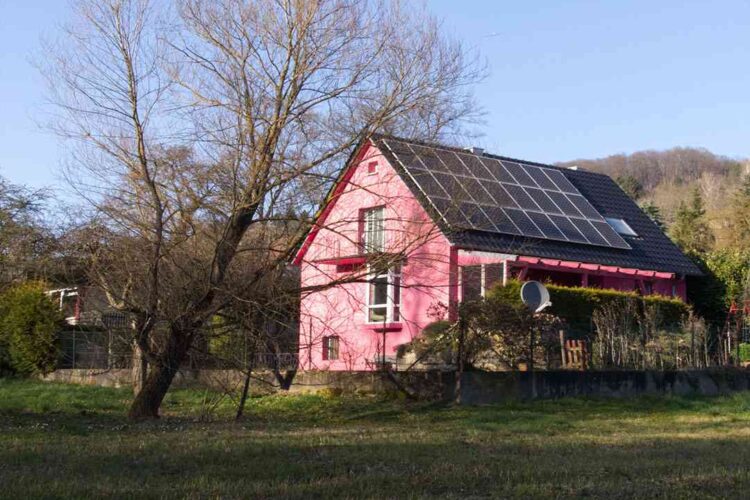
Embracing Off-Grid Living with Solar Energy System
In today’s world of ever-increasing energy demands and environmental concerns, the allure of self-sufficiency and sustainable living has captivated many individuals and communities. Solar energy, with its abundance and clean nature, has emerged as a frontrunner in the pursuit of energy independence. But can you truly go off-grid, completely severing ties with the traditional power grid, and rely solely on solar energy? The answer is a resounding yes, and it’s not as daunting as it may seem.
Understanding Off-Grid Living
Off-grid living, in essence, means generating your own electricity to power your home or business, unshackled from the conventional power grid. This self-sufficiency offers a multitude of benefits, including:
Energy independence:
Imagine stepping out of your home, energized and ready to face the day, without a single thought about your electricity bill. That’s the essence of energy independence, the freedom to power your life without relying on the traditional power grid. By embracing off-grid solar living, you become the master of your own energy destiny.
No longer are you bound by the whims of utility companies, their ever-increasing rates, or the unpredictability of power outages. Instead, you harness the sun’s boundless energy, generating electricity that powers your home, your workspace, and your lifestyle. You become a self-sufficient energy producer, immune to the fluctuations and disruptions of the conventional grid.
Reduced environmental impact:
As the world grapples with the pressing issues of climate change and environmental degradation, the transition to clean energy sources has become increasingly crucial. Solar energy, with its zero-emission nature, stands as a beacon of hope in this endeavor. By opting for off-grid solar living, you make a conscious decision to reduce your environmental footprint and contribute to a more sustainable future.
Unlike fossil fuels, which spew harmful pollutants into the atmosphere, solar energy generates electricity without leaving behind a trail of carbon dioxide or other greenhouse gases. Your home, powered by the sun, becomes a symbol of environmental stewardship, a testament to your commitment to a cleaner, greener planet.
Enhanced resilience:
In the face of natural disasters or grid disruptions, the ability to maintain power is not just a matter of convenience; it’s a lifeline, a source of comfort and security in times of uncertainty. When the conventional power grid falters, your off-grid solar system stands tall, providing a steady stream of electricity that keeps your home illuminated and your appliances running.
As storms rage outside or power lines fall victim to natural calamities, your solar-powered home remains a haven of normalcy. The lights stay on, your refrigerator hums contentedly, and your essential appliances continue to function, providing a sense of stability and reassurance amidst the chaos.
The Essentials of an Off-Grid Solar System
The key components of an off-grid solar system include:
Solar panels:
Solar panels, the heart of an off-grid solar system, are the technology that transforms sunlight into electricity. These photovoltaic wonders, composed of semiconductor cells, capture the sun’s energy and convert it into direct current (DC) electricity. The more sunlight the panels receive, the more electricity they generate, fueling your home’s energy needs.
Charge controller:
The charge controller acts as the traffic cop for electricity, ensuring a smooth and efficient flow between the solar panels, batteries, and inverter. This intelligent device prevents overcharging of the batteries, ensuring their longevity, and regulates the amount of electricity flowing to the inverter, maximizing energy utilization.
Batteries:
Batteries, the workhorses of an off-grid solar system, serve as the energy storage units, diligently saving the surplus electricity generated during the day for use at night or during periods of low sunlight. These deep-cycle batteries, capable of repeated charge and discharge cycles, ensure that your home has a steady supply of electricity even when the sun isn’t shining.
Inverter:
The inverter plays a crucial role in bridging the gap between the DC electricity generated by solar panels and the AC electricity used by most household appliances. This intelligent device converts the stored DC electricity into AC electricity, seamlessly transforming the sun’s energy into the power that runs your lights, appliances, and electronics.
Designing Your Off-Grid Solar System
The size and complexity of your off-grid solar system will depend on several factors, including your energy consumption habits, location, and desired level of self-sufficiency. A thorough assessment of your energy needs is essential to ensure your system can adequately power your home or business.
Embarking on Your Off-Grid Journey
While the concept of going off-grid may seem intimidating, it’s important to remember that you’re not alone. A growing community of individuals and businesses has successfully embraced off-grid living with solar energy. Numerous resources, including online forums, experienced professionals, and government incentives, are available to guide you through the process.
Embrace the Challenge, Reap the Rewards
Going off-grid with solar energy is not merely a technological endeavor; it’s a lifestyle choice that embodies a commitment to sustainability, self-reliance, and environmental consciousness. It’s a chance to harness the sun’s abundant energy, power your life in a harmonious way with nature, and contribute to a more resilient and sustainable future.
As you embark on this journey, remember that it’s not about perfection; it’s about progress. Each step you take towards energy independence is a victory, a testament to your commitment to a greener, more self-sufficient future. Embrace the challenge, relish the learning process, and revel in the satisfaction of powering your life with the sun’s boundless energy.